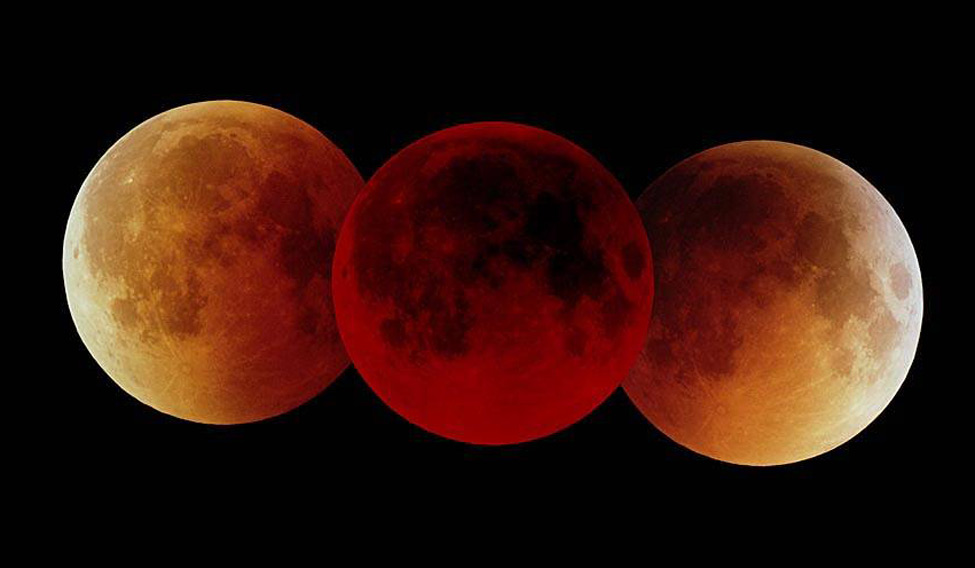Wednesday, literally, is a 'once in a blue moon' day. Space communities and sky-gazers across the world are gearing up to witness the rare Super Blue, Blood Moon. NASA is livestreaming the spectacle. Watch it here:
LIVE NOW: Watch views of the #SuperBlueBloodMoon from multiple telescopes. Take a look: https://t.co/a5ScGDXhQu
— NASA (@NASA) January 31, 2018
Read on to find out more about it:
What is Super Blue Blood Moon?
Wednesday's event has been termed the Super Blue Blood Moon because the day will witness three lunar events—blue moon, super moon and total lunar eclipse—coinciding after a long wait.
Blue moon
The second full moon in the same calendar month is called a blue moon. We welcomed new year with a full moon, which is set to repeat on Wednesday.
Super moon
A super moon occurs when the moon is at or near its closest point to the earth, or perigee. The Super moon is upto 14 per cent bigger and 30 per cent brighter.
Total lunar eclipse
A total lunar eclipse happens when the whole moon enters Earth's shadow. Some sunlight still reaches the moon, but first it goes through Earth's atmosphere. The atmosphere filters out most of the sun’s blue light, so the moon looks red, and hence, the name.
When was the last time it occured?
The event is happening after a gap of 35 years, and after 150 years for the Americas. The last time this occured was in 1982.
When will the next Super Blue Blood Moon be?
For the next, Earthlings will have to wait until 2037.
What time is the eclipse?
The total lunar eclipse begins at 5.20 pm (IST) with what is called the partial shadow or penumbra of the earth's shadow striking the moon. The main eclipse will start around 6.25 pm (IST) after sunset and this can be seen in the eastern sky as the moon would have just risen by then. "A slight sliver of the moon first gets covered in what is called the umbra, the total shadow, and slowly this spreads for several minutes. After that, it will recede and in an hours time, that is around 7.25 pm (IST), the main part of the eclipse would be over," a release from BM Birla Science Centre stated.
Will it be visible from India?
The total lunar eclipse can be seen from everywhere in India on Wednesday, with the moon taking a red brown glow, also called the "Blood Moon", said B.G. Sidharth, BM Birla Science Centre's Director. According to the National Geographic, the best views will be for people on the northern part of North America’s West Coast, as well for viewers across China, Japan, and most of Australia.
Experts say that the phenomenon will be clearly visible from any high-rise or open space. "It is absolutely safe to view the eclipse, even through the bare eyes," stated Karnataka-based Breakthrough Science Society, which has arranged a number of public spots for viewing the event.





